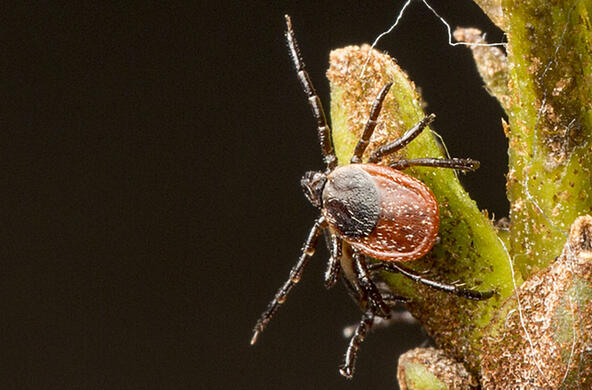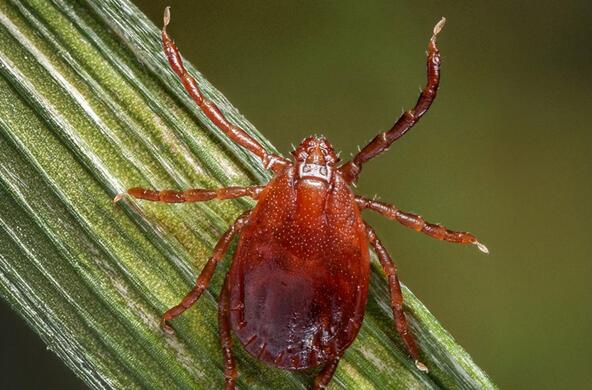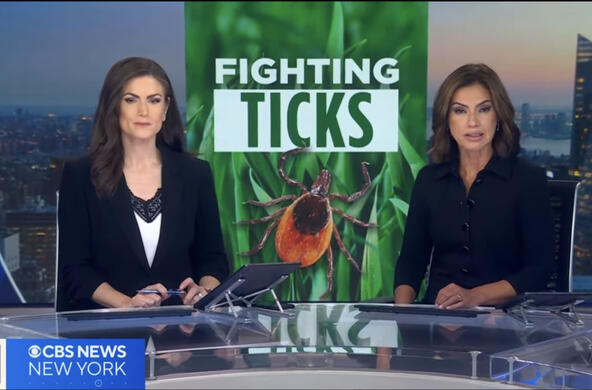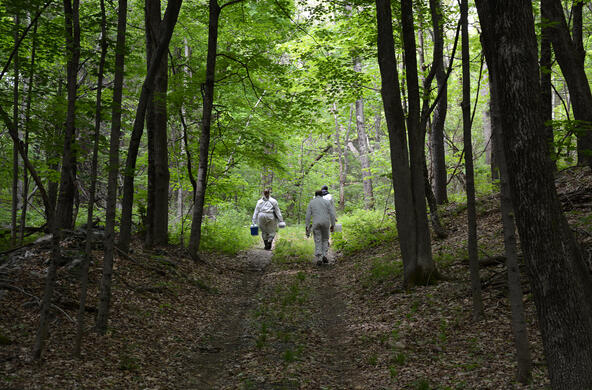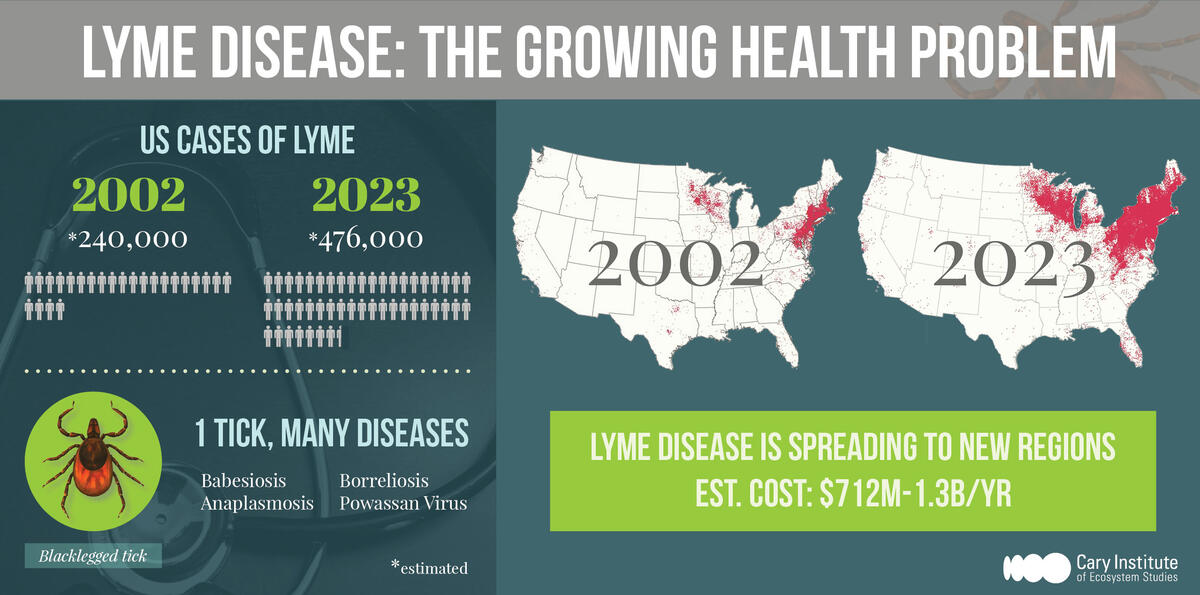
Lyme & tick-borne diseases are spreading. Fast.
In many parts of the US, enjoying the great outdoors comes with the risk of getting sick from a tick bite. The ticks that transmit the Lyme disease bacterium can also infect us with the pathogens that cause babesiosis, Powassan viral encephalitis, and anaplasmosis. Co-infections are not uncommon and can complicate treatment.
Lyme and other tick-borne diseases are on the rise, thanks in a part to climate change. Far too many of us have been sick or cared for a sick loved one. Even pets are vulnerable. We are working to unravel how the environment shapes tick-borne disease risk, with the goal of informing management that makes the outdoors safer for everyone.
Understanding how the environment shapes tick-borne disease risk is key to management and prevention.
The ecology of tick-borne disease. Our risk of contracting Lyme and other tick-borne diseases is shaped by ecological conditions. Amplifiers include the abundance of blacklegged ticks and white-footed mice, forest fragmentation, and an absence of predators on rodents. Heavy acorn crops can also forecast future Lyme disease risk.
Climate change and tick-borne disease risk. Blacklegged ticks are active and seeking blood meals anytime the temperature is above freezing. Climate change is extending the feeding season for ticks, and allowing them to expand their range northward, into previously unsuitable regions.
Imagine if you could reduce the risk of being bitten by a Lyme-infected tick?
Informed by our long-term data on mouse population size, weather variables, and tick life stages, our team is developing real-time forecasting of tick populations. Cultivating advanced warnings of high risk will give public health officials time to mobilize, spread awareness, and protect local populations.
After Cary worked alongside the NYS senate, legislation was passed in 2018 aimed at more effectively combating Lyme and tick-borne diseases. We continue to advocate for greater legislative support and are committed to raising awareness about these devastating diseases.

I have experienced the debilitating side effects of Lyme first-hand, and we are proud to support organizations like the Cary Institute that are investing in prevention strategies that will stop this awful disease from infecting more people.
Alexandra Cohen, Steven & Alexandra Cohen Foundation


